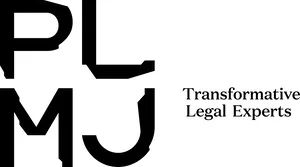Instruction no. 13/2018, of 19 September 2018 was published recently and establishes procedures that financial and banking institutions must comply with to identify the risk profile of their clients in carrying out import and export of goods transactions. The Instruction also addresses measures to prevent money laundering, terrorism financing and underlying infractions (jointly the "AML" rules) that must be applied to clients classified as "high-risk".
Under the Instruction, banks must have "in-depth knowledge" of the client's business model. The client must provide and update information concerning: (i) the business model, (ii) the main counterparties and countries, (iii) the goods and services traded and (v) history and prospects for annual volume and value of operations.
The Instruction also establishes a presumption of a high risk of money laundering under certain circumstances, including:
- Operations with countries that do not apply or apply in an insufficient way the international AML requirements, making it possible to conceal illegal cash flows, the creation of special purpose vehicles (SPVs) without the need for a physical structure in the country of incorporation, which lack transparency and are not subject to corporate governance rules equivalent to those required in Angola; and/or
- Operations with traders that act exclusively as intermediaries for one or more companies that import with a price distortion (and in violation of the transfer pricing rules) or that are not domiciled in the country of origin of the majority of the products; and/or
- Operations with a single shareholder company (unipessoal), of small size and without a robust corporate governance structure, and no international exposure and reputation.
The Instruction provides that importers that trade with exporters in the manner described above are classified as "High-Risk Importers", which triggers stronger KYC diligence procedures. Additionally, if a bank determines the existence of a "High-Risk Importer", it must not allow the client to use prepayments to pay for its imports.
The stronger KYC procedures include those provided for in Law 34/1 of December 12, and the ones specifically identified in the Instruction, namely:
Provision of the company accounts and the respective corporate income tax form (Modelo 1); Identification of the beneficial owners s of the exporter classified as a Trader, to confirm whether: (a) it is subject to sanctions imposed by the Office of Foreign Asset Control (OFCA), the United Nations Sanctions Committee and/or other equivalent entities, (b) the entities qualify as related entities and, (c) to obtain proof of delivery of the Transfer Pricing Report to the General Tax Administration, in the case of identified related entities and when the importer qualifies as a large taxpayer for the purposes of Order no. 316/17 of 17 July 2017, of the Ministry of Finance.
Additionally, the Instruction establishes several requirements that must be met by the banks when the transaction is processed by letter of credit, such as, not issuing or accepting letters of credit that are transferable or that allow transfer through one or more jurisdictions, unless there are valid economic reasons.
Apart from refusing to carry out transactions that do not comply with the Instruction, the financial banking institutions must also communicate those transactions to the Financial Information Unit (UIF).
Any violation of the provisions of this Instruction is punishable under Law 34/11 of 12 December 2011 – Anti-Money Laundering and Terrorism Financing Law, Law 05/97 of 27 June 1997 – Foreign Exchange Law and Law 12/15 of 17 June 2015 – Financial Institutions Law, without prejudice to any other legislation that might apply.
The Instruction enters into force on 20 October 2018.
The content of this article is intended to provide a general guide to the subject matter. Specialist advice should be sought about your specific circumstances.

